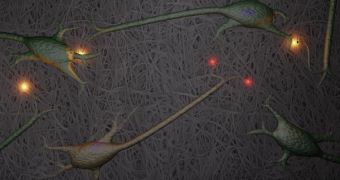The conclusions of a new investigation conducted by researchers from Chalmers and the University of Gothenburg, in Sweden, indicates that a compound called nanocellulose can support and promote the development of neurons and neural networks with great proficiency.
Scientists believe that this research may have very well set a foundation for the construction of a three-dimensional model of the human brain, something that investigators have been trying to do for decades.
In addition to accomplishing what was once thought to be impossible to replicate, researchers will also gain access to new methods of conducting brain research, which will have significant applications for researching conditions such as Alzheimer’s and Parkinson's.
Getting nerve cells to grow on nanocellulose was no easy feat, since the research team spent two years on this project. “This has been a great challenge,” explains Chalmers professor of biopolymer technology, Paul Gatenholm.
“Until recently the cells were dying after a while, since we weren’t able to get them to adhere to the scaffold. But after many experiments we discovered a method to get them to attach to the scaffold by making it more positively charged,” he explains.
As a result, he and his team now have access to a stable method of affixing and growing human nerve cells on nanocellulose foundations. The new cells show a natural predisposition to form connections between themselves, which resemble synapses.
Thus far, the research group was able to produce a network consisting of hundreds of neurons. While this achievement is remarkable, it's still a far cry away from replicating the 100 trillion neurons that make up an average human brain, AlphaGalileo reports.
However, the network can be used for practical applications, such as for example figuring out how various experimental drugs interact with nerve cells. This ability implies that the number of studies conducted in human volunteers could decrease significantly.
“Pores can be created in nanocellulose, which allows nerve cells to grow in a three-dimensional matrix. This makes it extra comfortable for the cells and creates a realistic cultivation environment that is more like a real brain compared with a three-dimensional cell cultivation well,” Gatenholm explains.
He adds that the substrate material, nanocellulose, is made up of nanoscale cellulose fibers, whose width vary from 5 to 20 nanometers. Their length can reach up to 2,000 nanometers. It can be obtained from natural wood pulp via a high-pressure homogenizer, or from specially-designed bacteria.

 14 DAY TRIAL //
14 DAY TRIAL //